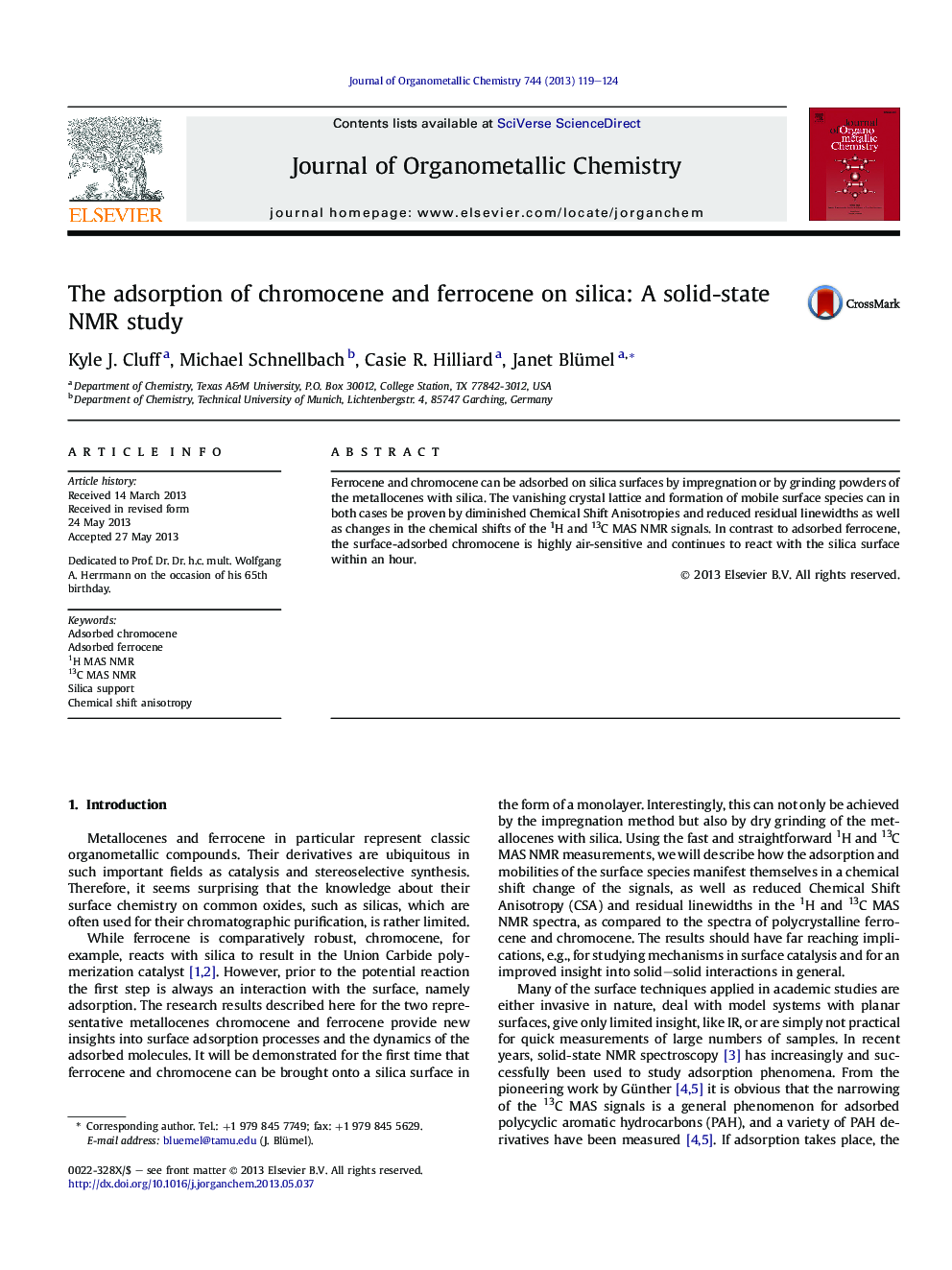| Article ID | Journal | Published Year | Pages | File Type |
|---|---|---|---|---|
| 1324398 | Journal of Organometallic Chemistry | 2013 | 6 Pages |
•Chromocene is adsorbed on oxide surfaces before forming the Union Carbide Catalyst.•Adsorption also takes place with ferrocene, but without subsequent fast reaction.•Adsorption can be achieved with both ferrocene and chromocene by dry grinding.•After adsorption the chemical shifts of the 1H and 13C MAS NMR signals change.•Upon adsorption the residual signal linewidths and CSA are reduced due to mobility.
Ferrocene and chromocene can be adsorbed on silica surfaces by impregnation or by grinding powders of the metallocenes with silica. The vanishing crystal lattice and formation of mobile surface species can in both cases be proven by diminished Chemical Shift Anisotropies and reduced residual linewidths as well as changes in the chemical shifts of the 1H and 13C MAS NMR signals. In contrast to adsorbed ferrocene, the surface-adsorbed chromocene is highly air-sensitive and continues to react with the silica surface within an hour.
Graphical abstractFerrocene and chromocene are adsorbed on silica surfaces by impregnation or grinding their powders with silica. The crystal lattice vanishes and formation of mobile surface species is proven by diminished Chemical Shift Anisotropies and residual linewidths and changes in the chemical shifts of the 1H and 13C MAS NMR signals.Figure optionsDownload full-size imageDownload as PowerPoint slide
